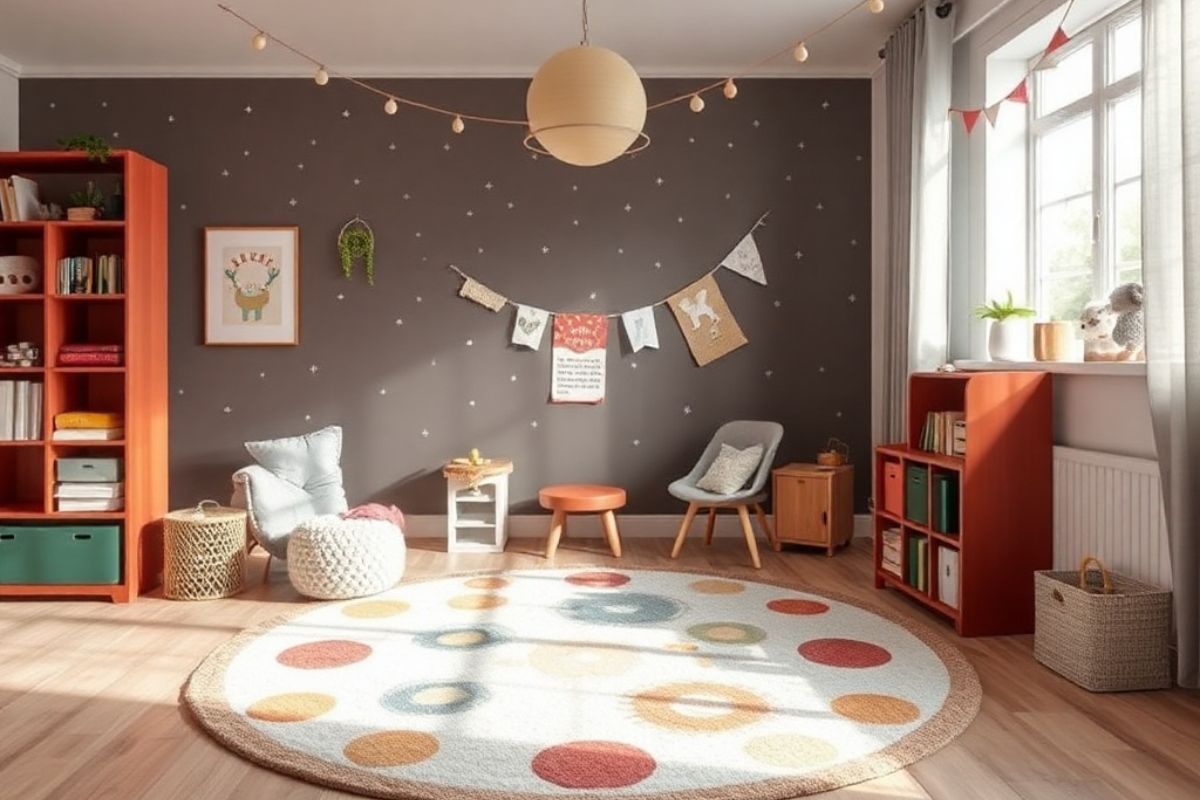How to Clean Upholstery Like a Pro

To clean upholstery like a pro, start by evaluating the fabric type and checking care labels. Gather essential supplies like a vacuum with an upholstery attachment, soft brushes, and a gentle cleaner. Remove loose dirt using the vacuum and thoroughly clean crevices. Always test the cleaning solution on a hidden area before applying it widely. Work in sections, applying the cleaner evenly and avoiding oversaturation. Rinse and dry properly afterward. For ongoing maintenance, consider professional cleanings every 12-18 months. This routine keeps your upholstery looking its best, and there's plenty more to uncover about effective techniques.
- Identify the upholstery fabric type and follow care label instructions for appropriate cleaning techniques.
- Gather essential supplies, including a vacuum, soft brushes, microfiber cloths, and a gentle upholstery cleaner.
- Test cleaning solutions on a hidden area to ensure no adverse reactions occur before full application.
- Remove loose dirt and debris by vacuuming thoroughly, including crevices and under cushions.
- Perform deep cleaning by using mild detergents for natural fibers and consider professional cleaning every 12-18 months.
Assess Your Upholstery Fabric
How can you guarantee your cleaning efforts are effective? Start by evaluating your upholstery fabric. Different materials require different cleaning methods, so knowing what you're dealing with is essential. Check for a care label, which often provides specific instructions. If there's no label, you can identify common fabrics like cotton, polyester, or leather by touch and appearance.
Once you've identified the fabric, consider its specific qualities—like whether it's water or solvent-resistant. For example, delicate fabrics like silk need gentle cleaning methods, while durable polyester can handle more robust approaches. By understanding your upholstery, you'll choose the right products and techniques, ensuring your cleaning efforts truly shine and extend the life of your furniture.
Gather Essential Cleaning Supplies
Before you plunge into cleaning your upholstery, it's crucial to gather the right supplies to make the process smooth and effective. Start with a vacuum cleaner equipped with an upholstery attachment to remove dust and debris. You'll need a soft brush for gentle scrubbing, microfiber cloths for wiping, and a bucket for mixing solutions.
Don't forget a gentle upholstery cleaner or a DIY solution like vinegar and water. Rubber gloves are handy to protect your hands, and a spray bottle makes applying your cleaner easier. Finally, have a soft towel on hand for drying any excess moisture. With these supplies at your side, you'll be well-prepared to tackle your upholstery cleaning task like a pro!

Test a Hidden Area
Where can you safely test your cleaning solution before tackling the entire piece? Look for a hidden area of your upholstery, like beneath a cushion or on the underside of the furniture. This spot should be inconspicuous, guaranteeing any potential damage won't be visible. Apply a small amount of your cleaning solution with a soft cloth, and gently rub the area.
Wait for a few minutes to see how the fabric reacts. Check for any discoloration, fading, or texture changes. If everything looks good, you're ready to proceed! If not, you might need to adjust your cleaning solution or choose a different method. Testing first can save you from costly mistakes and guarantee your upholstery stays looking its best.
Remove Loose Dirt and Debris
Start by removing loose dirt and debris from your upholstery to guarantee a thorough clean. Use a vacuum with an upholstery attachment to gently suck up dust, pet hair, and crumbs. Make sure to get into the crevices and seams where dirt tends to hide. If you don't have a vacuum, a lint roller or a soft brush can work wonders, too.
For delicate fabrics, consider using a microfiber cloth to wipe away any particles. Don't forget to check under cushions and around furniture; you'd be surprised at what's lurking there! By tackling the loose dirt first, you set the stage for a more effective and efficient deep clean, ensuring your upholstery looks its best.
Treat Stains Effectively
Once you've removed the loose dirt, it's time to tackle those stubborn stains. First, identify the stain type—whether it's grease, wine, or ink, knowing this helps you choose the right cleaning solution. For many stains, a mix of mild dish soap and warm water works wonders. Dampen a clean cloth with the solution, and gently dab the stain—never rub, as this can spread it.
For tough stains, consider using vinegar or rubbing alcohol, testing on a hidden area first. Blot the area with a dry cloth to absorb excess moisture, and let it air dry completely. If the stain persists, you might need a specialized upholstery cleaner that matches your fabric type. Remember, quick action makes all the difference!
.jpeg)
Deep Clean With the Right Method
As you immerse yourself in deep cleaning your upholstery, choosing the right method can make all the difference in restoring its look and feel. Start by identifying your fabric type; some materials require gentle cleaning, while others can handle more aggressive techniques. For natural fibers like cotton and linen, a mild detergent mixed with water works wonders. Synthetic fabrics, however, might benefit from specialized upholstery cleaners.
Consider using a steam cleaner for a thorough approach, as it effectively lifts dirt without harsh chemicals. When cleaning, work in sections, applying the cleaner evenly, and avoid oversaturating the fabric. Remember, patience is key—allow the solution to penetrate before blotting. This careful attention will guarantee your upholstery looks fresh and revitalized.
Rinse and Dry Properly
When cleaning upholstery, it's important to rinse and dry properly to prevent any residue buildup and maintain the fabric's integrity. After deep cleaning, take a clean, damp cloth and gently wipe the area to remove any soap or cleaning solution. Avoid soaking the fabric, as excess moisture can lead to mold or mildew. Once you've rinsed, use a fan or open windows to improve air circulation, helping the upholstery dry faster.
If possible, place cushions outside in the shade, allowing them to breathe and dry without direct sun exposure, which can fade colors. Finally, make sure everything is completely dry before using the furniture again, keeping it fresh and in top condition for years to come.
Prevent Future Stains

Maintaining clean upholstery goes beyond proper rinsing and drying; it also involves proactive measures to prevent future stains. Start by applying a fabric protector specifically designed for upholstery. This creates a barrier against spills and dirt. Always address spills immediately—blot, don't rub, to lift the stain without spreading it.
Encourage guests to avoid food and drinks near your furniture, or use coasters and trays to minimize risk. If you have pets, consider using washable covers to protect your upholstery. Regularly vacuuming your furniture helps remove dust and dirt that can lead to stains. Finally, be mindful of the materials you choose; some fabrics are more stain-resistant than others. Taking these steps can keep your upholstery looking its best for years to come.
Maintain Upholstery Regularly
Regular upkeep of your upholstery can greatly extend its lifespan and keep it looking fresh. To maintain your furniture, vacuum regularly to remove dust and debris that can wear down the fabric. Pay attention to crevices where dirt accumulates; a brush attachment can help with that. Rotate cushions occasionally to promote even wear. If you notice any spills, address them quickly with a gentle blot, avoiding rubbing which can set stains.
Consider using a fabric protector to shield against future stains. Additionally, schedule professional cleanings every 12-18 months to deep clean and refresh your upholstery. By incorporating these simple habits into your routine, you'll guarantee your upholstered pieces remain vibrant and inviting for years to come.
Conclusion
By following these steps, you can clean your upholstery like a pro and keep it looking fresh and vibrant. Remember to assess your fabric, treat stains promptly, and maintain your furniture regularly to prevent future issues. With the right supplies and techniques, you'll not only enhance your home's appearance but also extend the life of your upholstery. So roll up your sleeves and give your furniture the care it deserves! Your living space will thank you.









